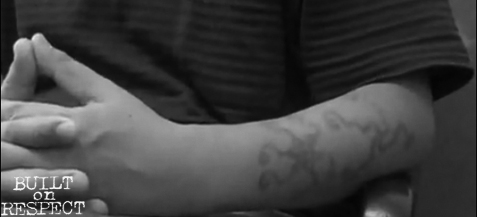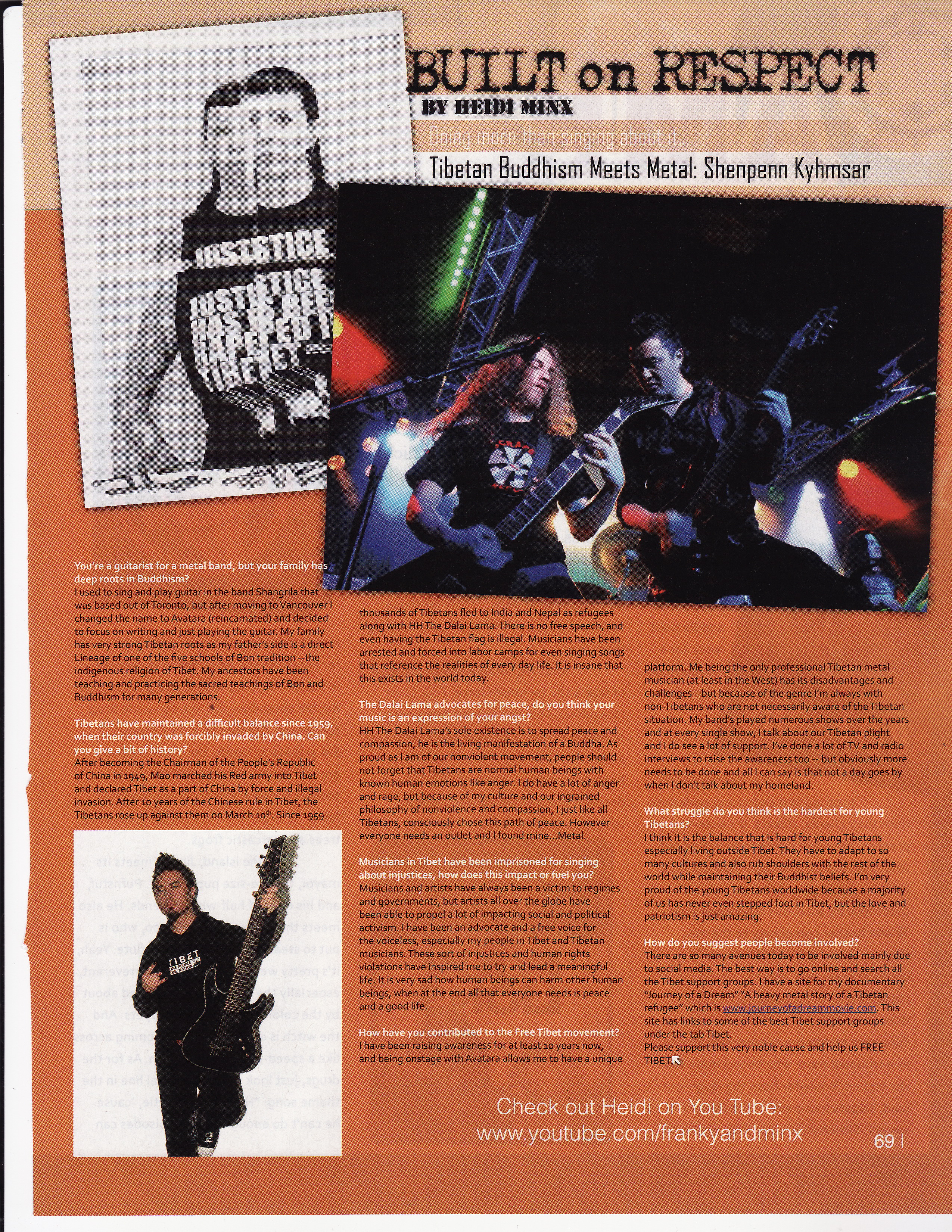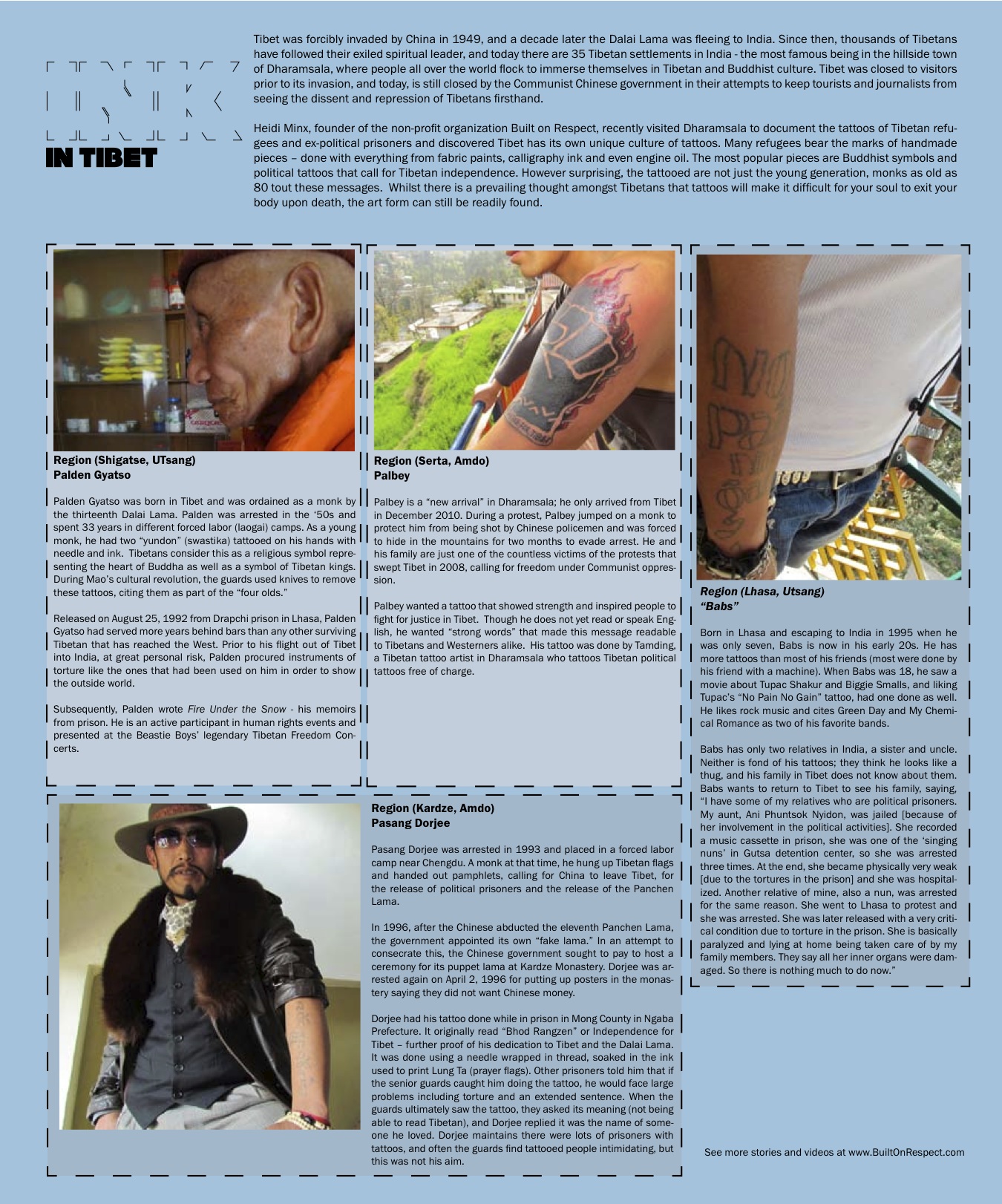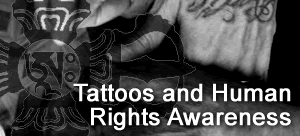Tattoos of Tibetan Ex-Political Prisoners: Phuntsok

[VIDEO] Phuntsok notes that tattoos became most popular in the 80s in Tibet, especially amongst those who have been in prison, or are ‘strong minded’.
He and his friends began getting tattoos when they were still in school, at that time they heard of the riots in Lhasa, and ‘Bho Rangzen’ or Freedom for Tibet, some of this they heard through songs. They felt this was a time of ‘waking up’, they had heard the stories of the past from their parents, but it was not as strong a feeling as being involved in the protests.
The songs of independence became popular in the schools, and the students heard about the freedom tattoos of Lhasa protesters.
He explains that he ‘yundon’ or swastika is an auspicious symbol that holds the essence of all good. It is frequently painted in the corners of houses for stability and permanence, for the stability of the family, and for the family to be free from problems. The ‘yundon’ predates Buddhism, and was also used in the ancient Bon religion.
Phuntsok also has the ‘endless knot’, one of the Eight Auspicious Symbols of Tibetan Buddhism. He notes that the prison authorities perceive tattoos in prison as a mark of someone who is difficult to deal with, or with strong political views. If someone is not a political prisoner, but the guards see tattoos, they will ask if you’ve been in prison before, they will see you as a ‘bad person’. Other popular tattoos included the three syllables of “Bod Rangzen” as something three prisoners would do together, each having one syllable. Others had their arrest dates tattooed on their knuckles.
Phuntsok used to write articles when he was in school in Lokha (Utsang Province); He encouraged students to wear Tibetan chuba (traditional Tibetan dress) and protective amulets. Because of that, the police monitored his actions, especially his writing.
In 1994, he wrote a chain letter that expressed that Tibet should be free, for this he was arrested. Phuntsok spent time in both Lhoka prison and the largest prison in Lhasa, Drapchi. Phuntsok served five years; he says the conditions in prison are not well understood by Tibetans inside Tibet, much less Westerners. During his time in prison, he knew five people personally who died as a direct result of torture. While incarcerated, Phuntsok was put on ‘construction’ detail; he said even if you moved wrong, guards beat you. He also cited ‘military exercises’, which were not for health, but another means of torture.














